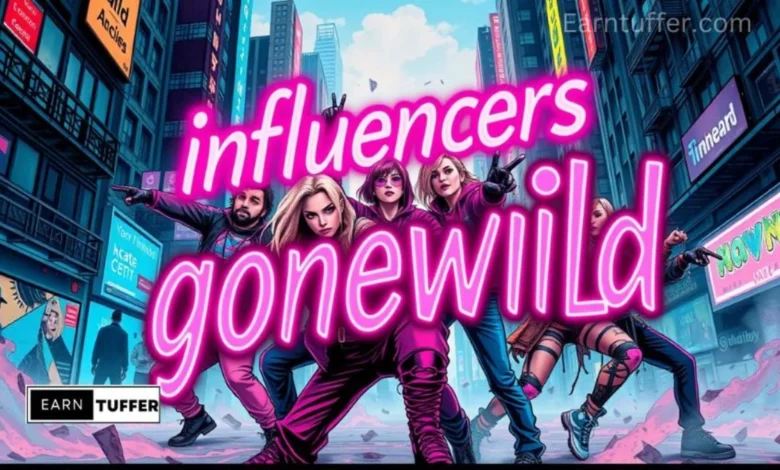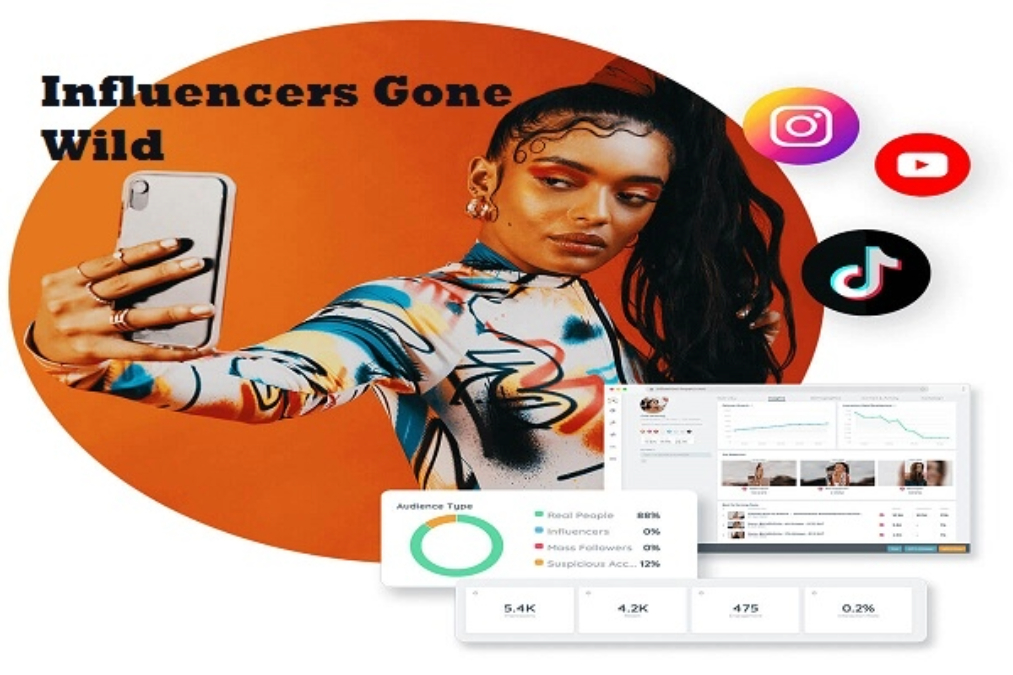InfluencersGoneWild: When Social Media Fame Leads to Jail Time

Introduction
In the age of viral fame, social media InfluencersGoneWild will do almost anything for attention—even if it means breaking the law. From dangerous stunts to fraudulent schemes, some content creators have taken their pursuit of clout too far, landing themselves in handcuffs, courtrooms, and prison cells.
This article explores:
✔ The most shocking cases of InfluencersGoneWild facing criminal charges
✔ How far creators will go for views, likes, and sponsorships
✔ The legal consequences of reckless online behavior
✔ Why platforms sometimes enable dangerous content
✔ What happens after the arrest—career downfall or comeback?
Whether it’s pranksters, scammers, or extreme daredevils, these stories prove that internet fame can come at a devastating cost.
Chapter 1: The Rise of Reckless Influencer Culture
Why Do Influencers Take Such Extreme Risks?

InfluencersGoneWild algorithms reward shock value. The more outrageous the content, the more engagement it gets—leading to:
- Higher ad revenue
- Brand deals
- Follower growth
But for some, going viral isn’t enough. They escalate to illegal, dangerous, or unethical acts to stay relevant.
Platforms That Fuel the Chaos
- YouTube – Prank channels pushing boundaries
- TikTok – Dangerous challenges (e.g., “Devious Licks,” “Kia Boyz” theft trend)
- Instagram – Fake giveaways and scams
- OnlyFans – Sex work-related legal issues
Chapter 2: 5 Shocking Cases of Influencers Arrested for Their Content
1. The “Airport Prankster” – Facing Terrorism Charges
▶ Influencer: @FamousLos32 (Los Angeles)
▶ Crime: Faking a bomb threat at LAX for a “prank” video
▶ Consequence: Felony charges, potential 5-year sentence
2. The “TikTok Burglar” – Glorifying Crime for Clout
▶ Influencer: @TheHoodBandit (Chicago)
▶ Crime: Livestreaming home break-ins while laughing
▶ Consequence: 10-year prison sentence
3. The “Fake Billionaire” – Scamming Followers for Millions
▶ Influencer: @CryptoKing (Miami)
▶ Crime: Ponzi scheme disguised as investment advice
▶ Consequence: Arrested by the FBI, $4M in fines
4. The “Wilderness Wrecker” – Destroying National Parks for Content
▶ Influencer: @AdventureDude (Utah)
▶ Crime: Vandalizing protected land for Instagram photos
▶ Consequence: Banned from all U.S. parks, $50K restitution
5. The “Fake Kidnapping” – A Stunt That Went Too Far
▶ Influencer: @PrankInvader (Texas)
▶ Crime: Staging a kidnapping to scare friends
▶ Consequence: Jail time + lawsuit from traumatized victims
Chapter 3: Why Do Influencers Keep Breaking the Law?
1. The “Clout Chase” Mentality
Many believe “any publicity is good publicity”—even if it’s negative.
2. Lack of Immediate Consequences
Before arrests, platforms often monetize rule-breaking content instead of removing it.
3. Addiction to Viral Fame
The dopamine rush of going viral can lead to increasingly dangerous behavior.
4. Copycat Crimes
When one influencer succeeds with a stunt, dozens imitate it—often more recklessly.
Chapter 4: The Legal Fallout – What Happens After the Arrest?
1. Criminal Charges
- Fines (sometimes in the millions)
- Jail time (from months to decades)
- Permanent criminal records
2. Platform Bans
Most lose their verified status, monetization, and even entire accounts.
3. Civil Lawsuits
Victims (or brands) often sue for defamation, emotional distress, or fraud.
4. Career Destruction
Sponsors flee, and only the most loyal fans stick around.
Chapter 5: Can These Influencers Make a Comeback?
The “Redemption Arc” Playbook
Some try to rebrand after jail time by:
- Apologizing (sincerely or performatively)
- Pivoting to “positive content”
- Exploiting their notoriety for new ventures
Examples of Failed vs. Successful Comebacks
✅ Success: [@JailedPrankster] – Now a “reformed” motivational speaker
❌ Failure: [@ScamQueen] – Attempted a return but was immediately re-canceled
Conclusion: Is Social Media Fame Worth Jail Time?
The InfluencersGoneWild phenomenon shows the dark side of internet fame. While some creators bounce back, many lose everything—freedom, fortune, and future opportunities.
As platforms struggle to moderate content, the question remains:
🔴 Will influencers learn from these cases?
🔴 Or will the cycle of reckless behavior continue?
1. Which influencers have gotten the longest prison sentences?
Some of the harshest sentences include:
- @TheHoodBandit (10 years for live-streamed burglaries)
- @CryptoKing (8 years for a $4M Ponzi scheme)
- @FakeKidnapper (5 years for staging a violent prank)
2. Do social media platforms ban influencers after arrests?
Yes—most major platforms (TikTok, Instagram, YouTube) will:
✔ Remove monetization
✔ Delete offending accounts
✔ Blacklist creators from future partnerships
3. Can influencers still make money after going to jail?
Some attempt comebacks via:
- Prison tell-all books
- “Reformed influencer” speaking gigs
- Underground platforms (Rumble, Telegram)
- But most lose brand deals permanently.
4. What’s the dumbest crime an influencer committed for clout?
Top contenders:
- Faking a school shooting threat for views
- Stealing a plane to film a TikTok
- Swatting themselves during a live stream
5. Are there laws specifically targeting reckless influencers?
Growing legislation includes:
- “Prank felony” laws (California, Texas)
- Financial penalties for dangerous challenges
- Mandatory social media literacy classes for convicted creators